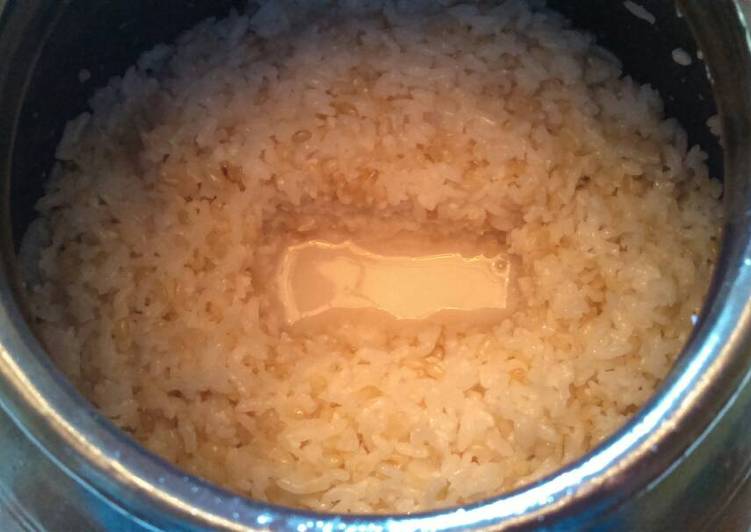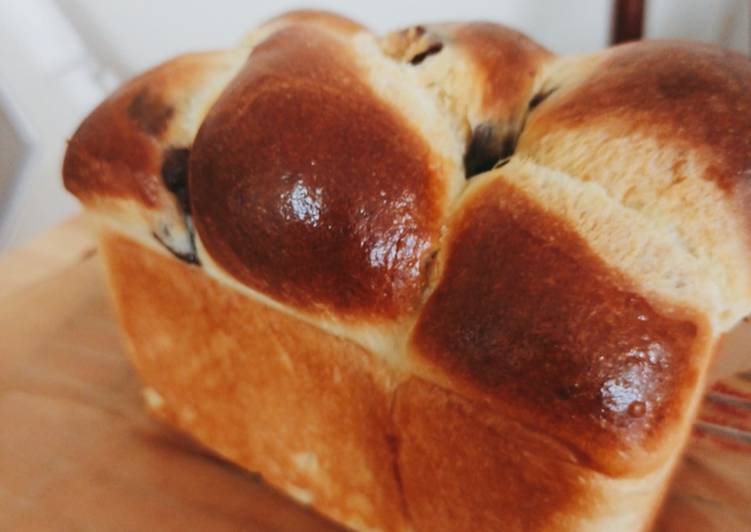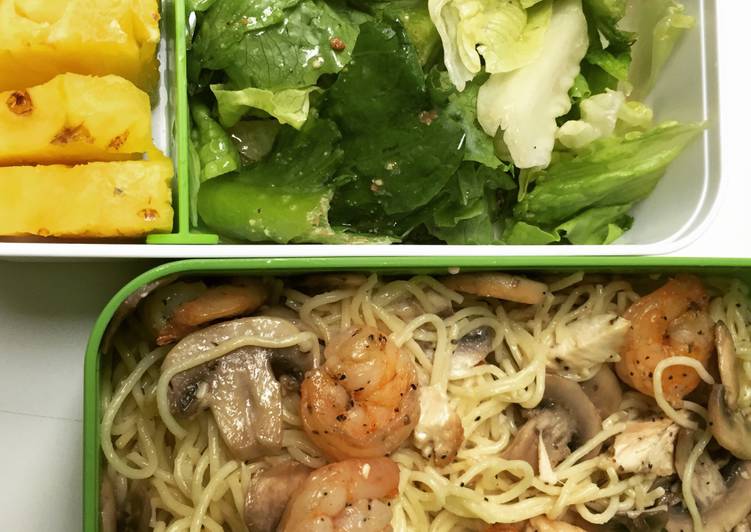
Hello everybody, I hope you’re having an incredible day today. Today, I’m gonna show you how to prepare a special dish, basic jiuniang (rice wine) 甜酒酿. It is one of my favorites food recipes. This time, I’m gonna make it a bit tasty. This will be really delicious.
Sweet Fermented Rice, or jiu niang (酒酿), also called Sweet Rice Wine, 甜米酒 (tian mi jiu) has numerous other Chinese names depending on what part of China you are from: 醪糟 (lao zao),米酒 (mi jiu), 甜酒 (tian jiu), 糯米酒 (nuo mi jiu), 江米酒 (jiang mi jiu), and 酒糟 (jiu zao). Chinese people loves to use fermentation starter to make fermented food with unique flavors including famous fermented black beans (dou-chi), Szechuan pickled vegetables (酸菜), doubanjiang, soy sauce and sweet bean sauce (甜面酱). This fermented sticky rice is known as Jiu Niang (酒酿) in Chinese. Sweet Fermented Rice, or jiu niang (酒酿), is a versatile Chinese specialty that can be added to both sweet and savory dishes.
Basic Jiuniang (Rice Wine) 甜酒酿 is one of the most well liked of current trending meals in the world. It is appreciated by millions every day. It is easy, it’s quick, it tastes yummy. Basic Jiuniang (Rice Wine) 甜酒酿 is something which I have loved my whole life. They’re fine and they look wonderful.
To begin with this recipe, we must prepare a few ingredients. You can have basic jiuniang (rice wine) 甜酒酿 using 4 ingredients and 6 steps. Here is how you cook that.
The ingredients needed to make Basic Jiuniang (Rice Wine) 甜酒酿:
- Get 4 +1/4 cups sweet white rice (1000g)
- Make ready 2 1/2 cups room temperature water (after boiling)
- Get 1 tsp or 4 g (half pack of Angel Rice Leaven Chinese yeast)
- Make ready 2 Tsp Sweet osmanthus + 1/2 cup boiling water (optional)
It also known as sweet wine or sweet rice wine. It is often made with sweet osmanthus flowers and tiny rice balls called. Osmanthus flowers bring up the fragrance. Jiuniang (fermented sweet rice wine) 酒酿(发酵甜米酒) This soup-like Chinese dish is actually unfiltered rice wine, but it has a very low alcohol content.
Steps to make Basic Jiuniang (Rice Wine) 甜酒酿:
- Make sure all tools that in contact with rice wine making are extremely clean(absolutely free from oil contamination).
- Rinse sweet white rice 3 times and soak a few hours (minimal 2 hrs). Discard soaking water and add 2 cups of water after soaking and cook in a rice cooker.
- Once rice is done cooking in the rice cooker, take the insert pot out and fluff the rice allow it to cool down to room temperature. In the meantime, use 1 cup of boiling water to brew 1 Tsp of sweet osmanthus flower for flavor and aroma enhancement. Allow the sweet osmanthus infused water (remove flower using with a metal mesh or cheesecloth) to cool down to room temperature.
- Add sweet osmanthus water and 1.5 cups of water into the rice pot and stir to mix well. Add half pack of angel rice leven yeast 4g and stir to incorporate well.
- Transfer all the mixture into a very clean fermenting vessel. I use a Korean earthware for this job and it doesn't have to seal well because in the early stage of wine making, oxygen is necessary for fermentation.
- Temperature is the key. Ideally, keep your wine jug in a temperature anywhere between 80-90F. Taste every 12 hours and decide when you want to slow down the fermentation by transferring it to a fridge. I typically wait 24 hours before transferring it into a fridge.
Osmanthus flowers bring up the fragrance. Jiuniang (fermented sweet rice wine) 酒酿(发酵甜米酒) This soup-like Chinese dish is actually unfiltered rice wine, but it has a very low alcohol content. Osmanthus flowers bring up the fragrance. Jiuniang (酒酿) is also called laozao (醪糟) and may be translated as Rice Sauce or even Rice Wine (due to its alcohol content). Jiu Niang [Image Credit: xinhuanet.com] Jiuniang, a sweet pudding-like dish, was firstly developed as a by-product of a fermented rice beverage called mijiu, or rice wine (米酒).
So that is going to wrap this up for this exceptional food basic jiuniang (rice wine) 甜酒酿 recipe. Thanks so much for your time. I’m sure that you will make this at home. There is gonna be interesting food in home recipes coming up. Don’t forget to save this page on your browser, and share it to your loved ones, friends and colleague. Thanks again for reading. Go on get cooking!

